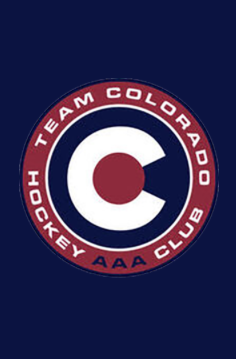Bar Prep Lessons from the Ice Rink
Recently, I traveled to St. Charles, MO, to watch my niece and her teammates from Team Colorado AAA Hickey Club compete at the AAA Girls Gateway Showcase. As I cheered on the team, I found myself reflecting on the many parallels between hockey and preparing for the bar exam. For those unfamiliar with hockey, here’s a breakdown of key hockey concepts—and how they relate to strategies for success on the bar exam.
🥅 Offsides – Timing is Everything
In hockey, players must wait until the puck crosses into the offensive zone before they do. If they cross too early, they’re offsides, and the play is stopped. This rule ensures a fair, organized game, where players must pay close attention to timing.
Bar Exam Strategy: Timing is crucial on the bar exam, too. Just like players can’t rush into the offensive zone too early, bar takers need to pace themselves to avoid burning out or running out of time on each section. On practice exams, keep an eye on how much time you spend per question, aiming for an even pace. This ensures you answer every question without rushing or overthinking.
Action Step: Practice with timed questions to build a sense of pace. Set a timer and work through questions at your intended test-day speed.
🥅 Penalties – Know the Rules
In hockey, breaking certain rules results in a penalty, temporarily putting the team at a disadvantage. Common penalties include tripping, high-sticking, or slashing, which can disrupt the team’s rhythm.
Bar Exam Strategy: On the bar exam, knowing the rules of law is equally crucial. Misunderstanding a rule or missing a key detail in an essay can weaken your response. Just as hockey players need a deep understanding of the game’s rules to avoid penalties, bar examinees must know the law’s details and apply them with precision.
Action Step: Focus on memorizing core rules and understanding their applications. Create flashcards for frequently tested laws and test yourself regularly to reinforce your understanding.
🥅 Power Play – Maximizing Opportunities
When a player on the opposing team receives a penalty, your team gains a "power play" advantage, with more players on the ice. Teams use this opportunity to attack and score goals.
Bar Exam Strategy: Make the most of moments when you’re fully focused and energized. Just like hockey teams capitalize on power plays, bar takers should maximize high-focus study sessions by tackling challenging topics or practice tests.
Action Step: Identify your peak focus times (like mornings or post-lunch) and dedicate those periods to high-yield tasks, such as working through practice essays or difficult MBE questions.
🥅 Face-Off – Starting Strong
Hockey games and each play sequence start with a face-off, where two players battle for control of the puck. Winning a face-off means gaining control and setting the pace for the next play.
Bar Exam Strategy: In the bar exam, it’s vital to start each section with confidence and clarity. Don’t rush through the first question just to get it done. Instead, take a deep breath, and begin with a clear strategy.
Action Step: Practice starting essays and multiple-choice sections with a strong, organized approach. Always begin by reviewing the call of the question. For essays, jot down your structure or issue outline before diving in to keep focused and organized from the beginning.
🥅 Line Changes – Recognizing When to Rest
Hockey players can’t stay on the ice for the entire game without exhausting themselves. They change lines (sub in and out) to stay fresh and ready to perform.
Bar Exam Strategy: Continuous, uninterrupted study can lead to burnout. Take breaks regularly to recharge, just like hockey players rest during line changes. These breaks are not only good for your mental health but also for long-term retention and productivity.
Action Step: Use the Pomodoro technique—study for 25 minutes, then take a 5-minute break. This rhythm can help you stay fresh and prevent mental fatigue.
🥅 The Goalie – Last Line of Defense
In hockey, the goalie is the team’s final defense against the opposing team scoring a goal. A good goalie stays alert, prepared, and positioned to block any shots on goal.
Bar Exam Strategy: For bar prep, you are your own goalie. You’re responsible for defending your preparation time, blocking out distractions, and keeping focused on your ultimate goal: passing the bar. Set boundaries with friends, family, and technology during study sessions to avoid unnecessary interruptions.
Action Step: Set up a dedicated study space and make it as distraction-free as possible. Consider using "Do Not Disturb" modes on devices or noise-canceling headphones to help you stay in the zone.
🥅 The Referee – Trusting the Process
Referees enforce the rules of hockey, keeping the game fair and safe. While we may not always agree with a call, we have to trust their decisions for the game to run smoothly.
Bar Exam Strategy: For bar prep, the referees are like your bar review course and its schedule. It’s designed to guide you step-by-step through what you need to know and help you stay on pace. It’s natural to question the schedule or feel overwhelmed, but trusting in the structure can save you from unnecessary stress and help ensure you’re covering everything in time.
Action Step: Follow your bar review program’s schedule as closely as possible. Resist the urge to skip around or prioritize topics based solely on what feels easy. Trust that the course has laid out a structured, balanced approach—one that’s been tested and proven to prepare you for the exam. If you’re ever behind or unsure, reach out to your instructor or support resources within the program instead of going off-plan.
Watching Team Colorado at the Gateway Showcase was a reminder that both sports and studying require focus, discipline, and strategy. Just as my niece’s team played with resilience and skill, I hope you approach bar prep with the same mindset.










